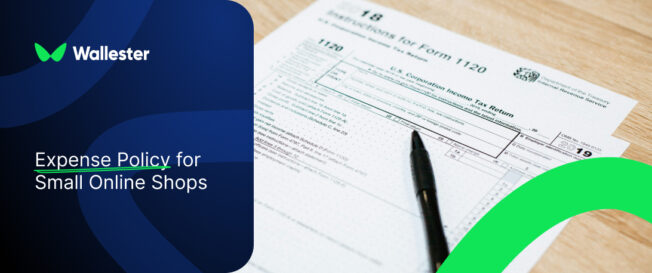Сross-border e-commerce brings fresh demand, access to multiple markets, and a bigger customer base, but it also brings cross-border fees, returns, customs hurdles, and currency risk. The trick is to design a cross-border strategy that trims hidden costs, supports customer experience, and protects profit margins while you test new markets. We’ll map fee structure basics, typical pitfalls for e-commerce businesses, and concrete ways to simplify international transactions without hurting delivery times or brand image.
What are foreign transaction fee components?
When a shopper in a foreign country pays your online store, several actors touch the money: the card issuer, the acquirer, the scheme (Visa/Mastercard), and your payment processors or PSPs. Each link can add a cost. A foreign transaction usually includes three broad elements:
- Interchange and scheme costs: fees linked to card networks and the card issuer; these change by card type, region, and risk profile. Guidance often cites ranges near 2-3% for foreign currency card mark-ups.
- FX conversion and spread: the rate you pay to switch from the customer’s currency into the settlement currency, plus any spread set by banking partners or processors.
- Cross-border fees and handling: extra charges that apply when the card’s issuing country differs from your acquirer’s country, sometimes listed as international transaction fees.
For bank transfers, you’ll face transfer fees, beneficiary charges in the destination country, and correspondent bank deductions when SWIFT rails are involved. Domestic alternatives (local clearing) often cut total cost if your cross-border payments volume is steady.
Common fee structures
Fee structure varies by provider, contract tier, and where you route transactions. Expect a mix of:
- Percentage fee + fixed pence: common on cards; the fixed part hits small baskets hardest.
- Tiered pricing by region or card type: higher for inter-regional transactions and commercial cards. Recent UK rulings keep interchange under scrutiny, which can affect how payment processors price merchants.
- FX conversion fee or spread: variable by currency pair; high-volatility pairs usually cost more.
- Cross-border surcharge: applied when the customer’s card and your acquirer sit in different countries.
- Payout and settlement fees: especially for marketplaces or when you settle to different countries.
- Bank transfers: per-transfer fees, intermediary deductions, and incoming charges on the recipient account.
Knowing where each penny lands lets you group regions, choose local currencies for authorisation, and negotiate with partners for lower costs.
Challenges of cross-border e-commerce
Going beyond one country means new risks, fresh admin, and more moving parts. Key factors that raise the total cost:
- Returns and reverse logistics: cross-border returns are expensive due to international shipping, restocking, and customs clearance.
- Fragmented payments: different countries favour different payment methods and local currencies, which complicates routing, reconciliation, and customer satisfaction.
- Taxes and trade policies: duties, sales tax/VAT, and customs regulations vary by destination country and can change, creating friction for both transporting goods and price display.
- Operational sprawl: more vendors, more contracts, and more tools to keep aligned with your cross-border commerce goals.
- Data quality: without clean data, you can’t see which cross-border sales drive profit versus those that simply add volume.
Returns deserve special attention. Cross-border returns hit logistics, picking capacity, carrier rates, and product condition upon arrival. If you sell in global markets with high fit/size sensitivity, model return risk up front and bake it into pricing.
Further Reading: Managing Supplier and Marketplace Fees Without Losing Track

Strategies to optimise cross-border payment processing
Before we get into tactics, let’s set the goal: lower fees, faster settlement, cleaner data. Here is how to get there.
Optimisation of banking relationships
Open accounts in strategic hubs and align them with settlement flows. Where possible, pair local acquiring with local settlement to cut cross-border fees, reduce FX exposure, and shorten payout delays. For recurring supplier payments, test local clearing rails rather than international bank transfers to save on per-payment charges. Build a tiered bank panel to prevent over-reliance on one partner.
Optimising payment methods
Match payment options to cultural preferences in each local market. Support regional wallets and bank-to-bank schemes where adoption is strong, then route card traffic through the acquirer with the best approval rates for that BIN country. Reduce false declines with AVS/3DS rules tuned per market. Keep a clean product description structure and pricing logic to limit disputes that spiral into chargebacks.
Solutions for currency management
Work backwards from the customer experience: offer prices in local currencies for target customers, settle in the currency that limits your FX swings, then centralise net exposure. Use natural hedges (buying and selling in the same currency where possible) before you add financial hedging. Keep a rulebook for which orders you convert at authorisation, capture, or payout so finance can explain variances.
Quick currency checklist:
- Price in the currency customers expect in international e-commerce.
- Decide which flows you keep in home country currency versus local.
- Track FX spreads as closely as headline fees.
Strategies to enhance local market presence
Treat each region as its own local market. Translate product descriptions with native copy, map delivery times honestly, and adapt images for brand positioning that feels relevant in that culture. Local competitors set the benchmark for price and service; your brand image grows when you match their standards from day one and maintain predictable service levels.
Further Reading: Cross-Border Payments: How Money Moves Across Borders Today
Risk management and compliance
Screen orders by risk tiers and log decisions. Keep KYC/KYB requirements tidy for marketplace sellers and suppliers. Map sanctions, local taxes, and data rules per destination country. Build a cadence with counsel to review cross-border transaction rules, card scheme updates, and import/export controls so you ensure compliance with local and international frameworks across international transactions.
Requirements for IT infrastructure
You’ll need clear data flows from checkout to ledger. Priorities:
- Normalised payment and refund events across processors.
- Accurate order status for shipping costs, customs clearance, and cross-border returns.
- Reconciliation that joins acquirer reports, bank statements, and ERP.
- A flexible tax engine for sales tax/VAT per destination country.
- Data warehousing for cohort views by region, channel, and campaign.
Aspects of customer experience
Customer trust grows when you remove surprises. Show total cost at checkout (item, duty/tax, shipping, and any cross-border e fees or surcharges), give a realistic delivery window, and explain returns clearly. If you sell across different countries, re-state what “free returns” means by region. Short, plain updates across the shipping journey help customer acquisition and keep service teams from drowning in “Where is my order?” tickets.
Monitoring and analysis of data
Build a simple weekly pack that compares new markets, existing regions, and one country pilots. Track approval rates by issuer country, FX spread trends, refund velocity, cross-border payments share, and return rates. Segment cross-border e-commerce expenses into variable (fees, FX, shipping) and controllable (operations, packaging, policies) to see where lower costs are realistic without harming customer experience.
Recommended metrics to trend each week:
- Approval rate by card issuer and acquirer route
- Average FX spread by currency pair
- cross-border sales share vs local sales
- Return rate by SKU and reason code (ties to cross-border returns)
- Average delivery times vs promise by destination country
Further Reading: The Hidden Costs of Returns and Refunds in Online Retail
Choosing a reliable system for your multi-currency transactions
Look for payment processors that support global e-commerce with local acquiring in your key regions, transparent fee structure, and tools for currency routing. For bank transfers, compare options that offer pooled accounts, virtual IBANs, and smart reconciliation. Your “future-proof” stack is one that lets you test payment methods fast, expand to new markets without long builds, and keep data clean enough for finance to read at a glance.
Buyer’s shortlist (use three to five of these as go/no-go criteria):
- Local acquiring in your top target market countries
- Clear cross-border fees disclosure and FX methodology
- Choice of settlement currencies and payout cadences
- Strong dispute tooling and clear scheme data
- Sandbox and documentation good enough for quick trials
Payments across-borders: future trends and innovations
Expect growth in account-to-account rails, better approval-rate routing based on issuer BIN, and more predictable import duty calculation at checkout. Returns tech will keep expanding as retailers confront the hidden costs tied to cross-border returns and customer satisfaction. Market size estimates vary by source and method, but all point to steady growth through 2030. Some trackers place 2024 cross-border e-commerce value near the trillion-dollar mark; others cite lower or higher figures depending on definition and B2B/B2C scope.
Where innovation helps now
- Smart routing: move traffic between acquirers for higher approvals and lower scheme costs.
- Checkout duty calculators: cut post-purchase shocks and refunds.
- Return-policy engines: country-specific windows and fees to balance customer trust and margin.
- BIN-level risk rules: lower false declines while keeping fraud in check.
Wallester: Visa-backed issuing for real cross-border spend
Wallester gives you card issuing that actually fits cross-border operations: instant virtual cards for new markets, physical cards for on-the-ground teams, and a clean API to plug everything into your stack. Cards tokenise to Apple Pay and Google Pay for online and in-store use worldwide. Spend controls work in real time, so finance can shape authorisations without wrestling with spreadsheets.

What you can do right away
- Issue virtual cards on demand for campaigns, suppliers, or travel; roll out physical cards when teams need plastic.
- Set per-card rules in seconds: single-purchase caps, monthly limits, MCC blocks, merchant whitelists, and country locks.
- Fund and settle smoothly with bank transfers; keep reconciliation tidy via webhooks, exports, and the API.
- Reduce payment friction with 3-D Secure/SCA, tokenised wallets, and live authorisation data for smarter routing.
- Run it your way: use Wallester Business out of the box, or go White-Label to brand the app, cards, and flows under your own name.
Why it helps with cross-border
- Faster market tests: spin up cards for a new region, control where they work, and watch approval rates and costs by route.
- Cleaner data: every transaction hits your ledger with useful metadata, so finance can trace spend by team, project, and country.
- Fewer disputes: tighter rules at the card level cut accidental renewals, off-policy buys, and messy month-end surprises.
Learn how Wallester Business issues cards on demand, locks spend by merchant or country, and gives finance real-time control over cross-border budgets – all in one place.


